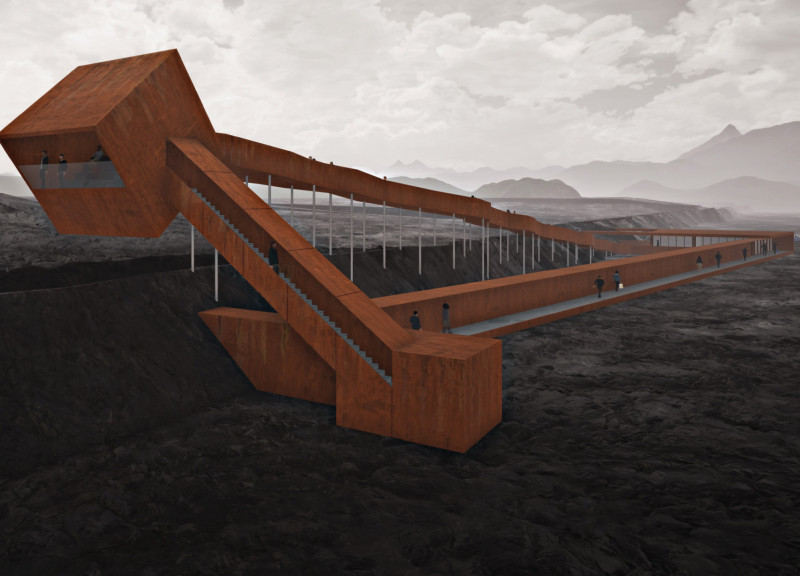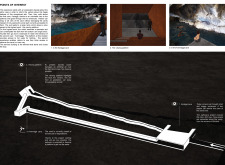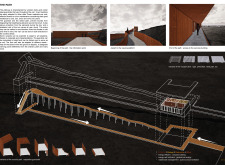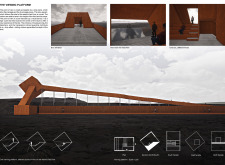5 key facts about this project
The design is situated along a seismic fault line, connecting visitors with important geological features like the Karlagjá and Kvennagjá caves. It serves to guide pedestrian traffic through the site while prioritizing environmental preservation. The pathway arrangement creates a loop that accommodates changes in elevation, ultimately leading to a viewing platform that offers an elevated view of the landscape.
Visitor Experience
The journey begins with an informative wall that explains the area’s ecosystem and rules for engagement, enhancing visitors' understanding of the site’s delicate nature. As they walk along the pathway, they pass over the Karlagjá cave, gaining a view that helps them appreciate the geological formations without causing harm. This intentional design allows for a thoughtful interaction between guests and the natural environment.
Pathway and Viewing Platform
The pathway leads to a large ramp, allowing a smooth ascent to the viewing platform. This gradual climb helps visitors grasp the scale and depth of the fault line. The platform functions as a key feature, providing an open view of the surrounding landscape. With this perspective, visitors can reflect on the area’s geological characteristics and natural beauty.
Materials and Durability
Carefully selected materials contribute to the project's durability and visual connection with the landscape. Wooden decks serve as the main walking surfaces, creating a warm and inviting atmosphere. Corten steel guardrails are placed along the pathway to ensure safety while blending into the rugged terrain. The color and texture of the steel harmonize with the natural environment, reinforcing the relationship between the architecture and the landscape.
Accessibility Considerations
Accessibility is a primary concern in the design, illustrated by the long ramp that leads up to the viewing platform. This feature ensures that all visitors, regardless of mobility, can comfortably navigate the site. The gentle incline promotes an inclusive experience of the geological formations, allowing everyone to engage with the landscape.
The design culminates in a viewing platform that frames the fault line, inviting visitors to take in the geological formations from a new angle.






















































